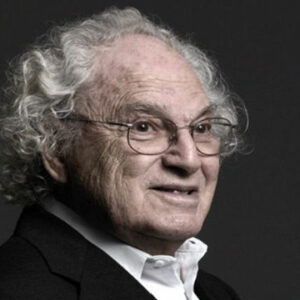Herbert Aaron Hauptman was an American mathematician who shared the 1985 Nobel Prize in Chemistry with others. He was a pioneer in using mathematical equations to determine the structure of molecules in crystalline materials. He studied mathematics and physics as a youth, earning a B.A. from City College of New York and an M.A. from Columbia University. A mathematician by training, he began research on X-ray crystallography with chemist Jerome Karle. His mathematical skills and Jerome Karle’s physical chemistry expertise enabled them to detect problems with X-ray crystallography, develop probabilistic approaches, and derive mathematical equations while studying molecular structure. ‘Development of direct methods for determining crystal structures’ was Hauptman and Jerome Karle’s 1985 Nobel Prize in Chemistry. Hauptman later worked as research director and president of the Medical Foundation of Buffalo’s crystallographic group. He also lectured at the University of Buffalo’s Department of Computer Science and Biophysics. He wrote around 170 journals, papers, articles, books, and chapters during his career.
Childhood & Early Life
Herbert Aaron Hauptman was born in New York City on February 14, 1917. He was the son of Leah (Rosenfeld) and Israel Hauptman.
He graduated from Townsend Harris High School and had an interest in math and science. He then attended City College of New York, where he earned a Bachelor of Science in Mathematics in 1937.
Columbia University awarded him an M.A. in Mathematics in 1939. After WWII, he earned his Ph.D. from the University of Maryland, College Park. He then joined physical chemist Jerome Karle at the Naval Research Laboratory in Washington, D.C. Graduated from the University of Maryland in 1955, Herbert A. Hauptman.
A Career of Herbert A. Hauptman
After WWII, Herbert A. Hauptman began working with Jerome Karle at the Naval Research Laboratory in Washington, D.C., while also pursuing further studies.
They studied the pattern of scattering of an X-ray beam through a crystal form of the molecule to obtain a 3D structure. However, X-ray crystallography could only anticipate a molecule’s structure, which had to be confirmed by subsequent research.
Together with Jerome Karle, Hauptman used probability theory to compute the angles at which X-ray photons were deflected when they passed the electrons around the atom nucleus. These findings led to the invention of equations that precisely positioned atoms.
Solving the Phase Problem I. The Centrosymmetric Crystal was published in 1953. The monograph discussed structure invariants, seminvariants, and phase linear combinations. A few years later, non-centrosymmetric space groups were added.
Antibiotics, hormones, and vitamin researchers benefited from these insights since previously inaccessible structures could be explored.
He chose crystallography over laser guided missiles and joined the Medical Foundation of Buffalo’s crystallographic group in 1970. (renamed the Hauptman-Woodward institute since 1994). An endocrine private foundation.
He joined the Medical Foundation of Buffalo in 1972 as research director and served as President until his death in 1988. He was also an Adjunct Professor in the Department of Computer Science at the University of Buffalo.
In the 1980s, he moved his focus from crystallography to studying bigger molecules.
He was known to have written over 170 papers, books, journals, and articles.
Grandiose of Herbert A. Hauptman
Herbert A. Hauptman was a mathematician who pioneered X-ray crystallography to discover molecular structure. His work influenced modern chemistry research and the pharmaceutical sector.
The City College of New York awarded him the Belden Prize in Mathematics in 1935.
He shared the American Crystallography Association’s Patterson Award in 1984.
Herbert A. Hauptman and Jerom Karle shared the 1985 Nobel Chemistry Prize.
He was honored by Townsend Harris in 1989.
The University of New South Wales awarded him the Dirac Medal for Theoretical Physics Advancement in 1991.
As a result, he was inducted into the Jewish Academy of Arts and Sciences, the U.S. National Academy of Sciences, and the Association of Independent Research Institutes.
Personal Legacy of Herbert A. Hauptman
Carole (born in 1947) and Barbara (in 1940) were Herbert A. Hauptman’s daughters (born in 1950).
He signed the American Humanist Association’s Humanist Manifesto in 2003.
He died of a stroke on October 23, 2011 in Buffalo, New York.
Estimated Net Worth
Herbert is one of the wealthiest and most popular mathematicians. Herbert A. Hauptman net worth is estimated at $19 Million by Wikipedia, Forbes, and Business Insider.


